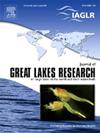Genetic characterization and interspecies gene flow among the Oreochromis species in the Lake Victoria and Kyoga basins, Uganda: Implications for conservation
IF 2.5
3区 环境科学与生态学
Q3 ENVIRONMENTAL SCIENCES
引用次数: 0
Abstract
Despite the significant fishery contribution of the Victoria and Kyoga basins, the ecosystems have continuously been threatened by overfishing and introduction of alien species, among others. These activities have contributed to a significant decline of the native tilapiines, the Singida tilapia (Oreochromis esculentus) and Victoria tilapia (Oreochromis variabilis). As a consequence, the native species have been relegated to smaller satellite lakes and replaced by non-native species comprising Nile tilapia (O. niloticus) and blue spotted tilapia (O. leucostictus). Therefore, to better understand the implications of these events, it is important to assess the status of both native and non-native species in the Victoria and Kyoga basins for sustainable science-based informed management options. Utilizing both microsatellite and mitochondrial (mt) DNA markers, we sequenced a total of 739 individuals from the Victoria and Kyoga basins comprising O. niloticus (333), O. esculentus (151), and O. leucostictus (258). Generally, all the species and their respective populations exhibited lower genetic diversity as well as genetic differentiation. The principal coordinate analysis showed three main distinct groups corresponding to the three species studied highlighting their genetic differentiation. However, some evidence of introgressive hybridization observed between O. niloticus and O. esculentus as well as O. esculentus and O. leucostictus suggests a need for a tailored management strategy to preserve the genetic integrity of all three Oreochromis species while minimizing the hybridization risks. The study recommends that the satellite waterbodies containing pure stocks of O. esculentus should be conserved separately with higher priority.
乌干达维多利亚湖和Kyoga盆地Oreochromis物种的遗传特征和种间基因流动:对保护的启示
尽管维多利亚和Kyoga盆地的渔业贡献巨大,但生态系统不断受到过度捕捞和外来物种引入等的威胁。这些活动导致了本地罗非鱼,Singida罗非鱼(Oreochromis esculentus)和Victoria罗非鱼(Oreochromis variabilis)的显著减少。因此,本地物种被转移到较小的卫星湖中,取而代之的是非本地物种,包括尼罗罗非鱼(O. niloticus)和蓝斑罗非鱼(O. leucostictus)。因此,为了更好地了解这些事件的影响,评估维多利亚和Kyoga盆地的本地和非本地物种的状况对于可持续的基于科学的知情管理方案至关重要。利用微卫星和线粒体(mt) DNA标记,我们对来自维多利亚和Kyoga盆地的739个个体进行了测序,其中包括O. niloticus(333)、O. esculentus(151)和O. leucostictus(258)。总体而言,所有物种及其居群的遗传多样性和遗传分化程度都较低。主坐标分析显示三个主要的不同类群对应于所研究的三个物种,突出了它们的遗传分化。然而,一些观察到的O. niloticus与O. esculentus以及O. esculentus与O. leucostictus之间渐进杂交的证据表明,需要有针对性的管理策略来保护所有三个Oreochromis物种的遗传完整性,同时最大限度地降低杂交风险。研究建议对含纯鱼资源的卫星水体进行单独保护,并给予优先保护。
本文章由计算机程序翻译,如有差异,请以英文原文为准。
求助全文
约1分钟内获得全文
求助全文
来源期刊

Journal of Great Lakes Research
生物-海洋与淡水生物学
CiteScore
5.10
自引率
13.60%
发文量
178
审稿时长
6 months
期刊介绍:
Published six times per year, the Journal of Great Lakes Research is multidisciplinary in its coverage, publishing manuscripts on a wide range of theoretical and applied topics in the natural science fields of biology, chemistry, physics, geology, as well as social sciences of the large lakes of the world and their watersheds. Large lakes generally are considered as those lakes which have a mean surface area of >500 km2 (see Herdendorf, C.E. 1982. Large lakes of the world. J. Great Lakes Res. 8:379-412, for examples), although smaller lakes may be considered, especially if they are very deep. We also welcome contributions on saline lakes and research on estuarine waters where the results have application to large lakes.
 求助内容:
求助内容: 应助结果提醒方式:
应助结果提醒方式:


